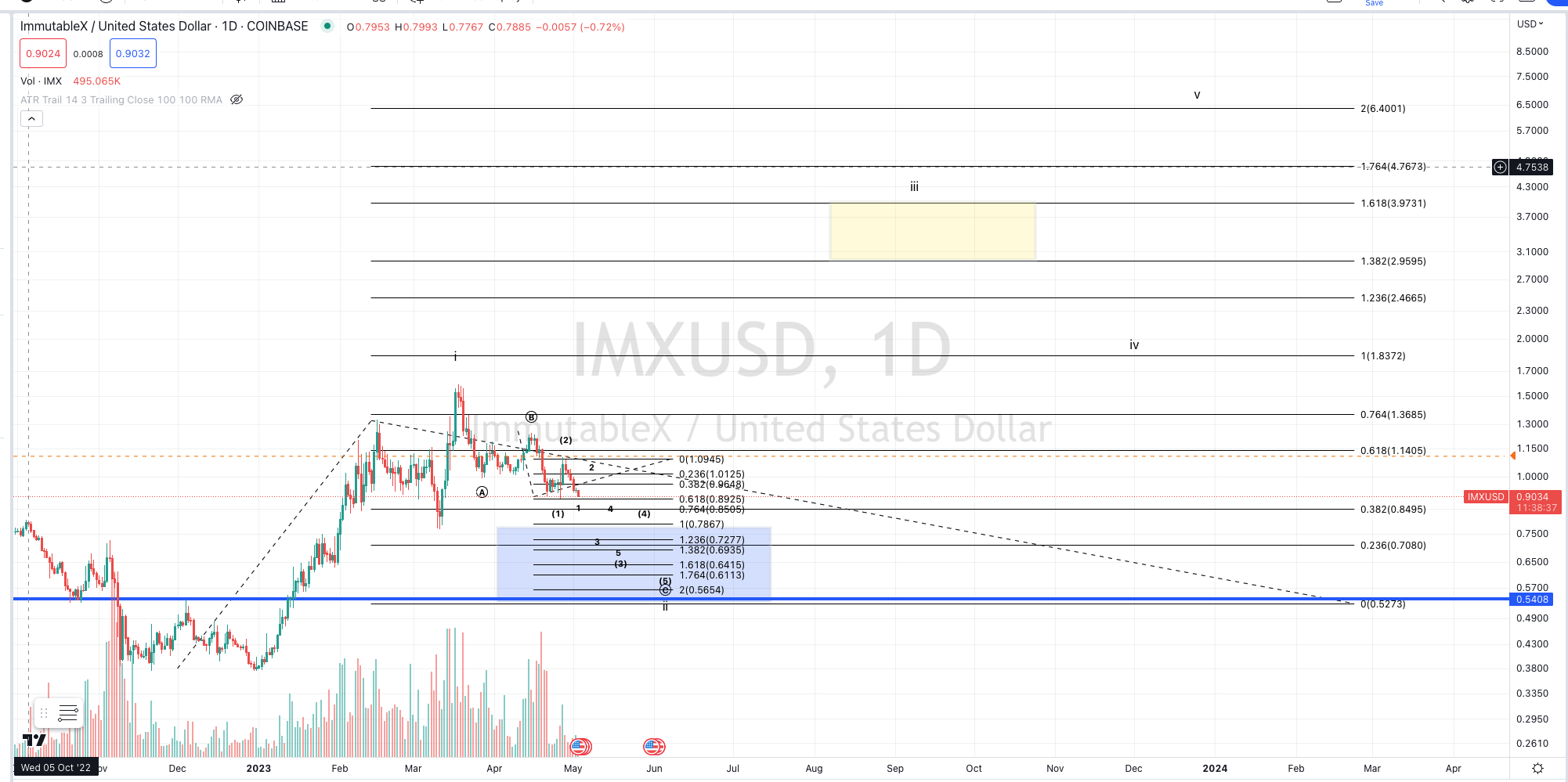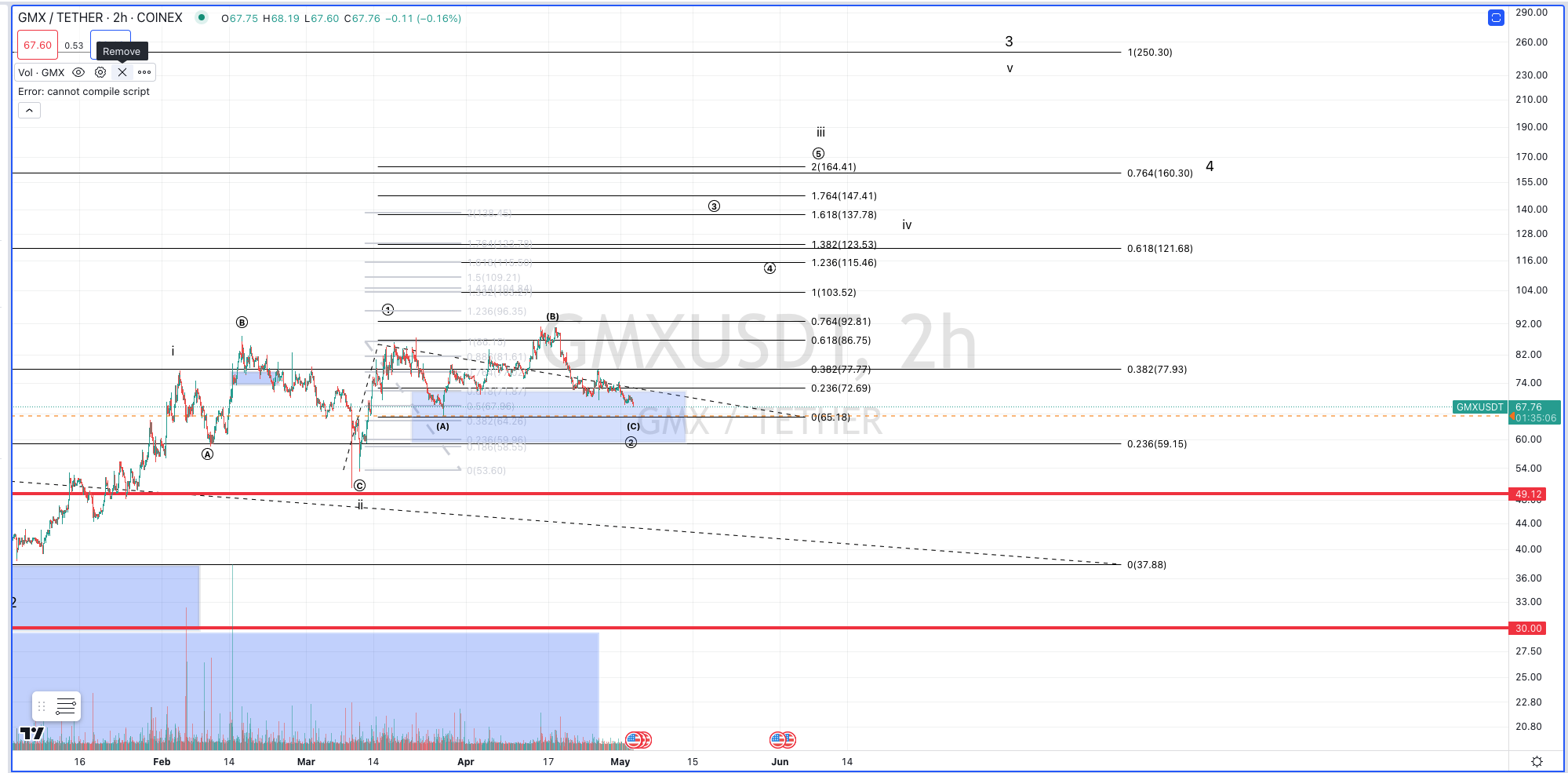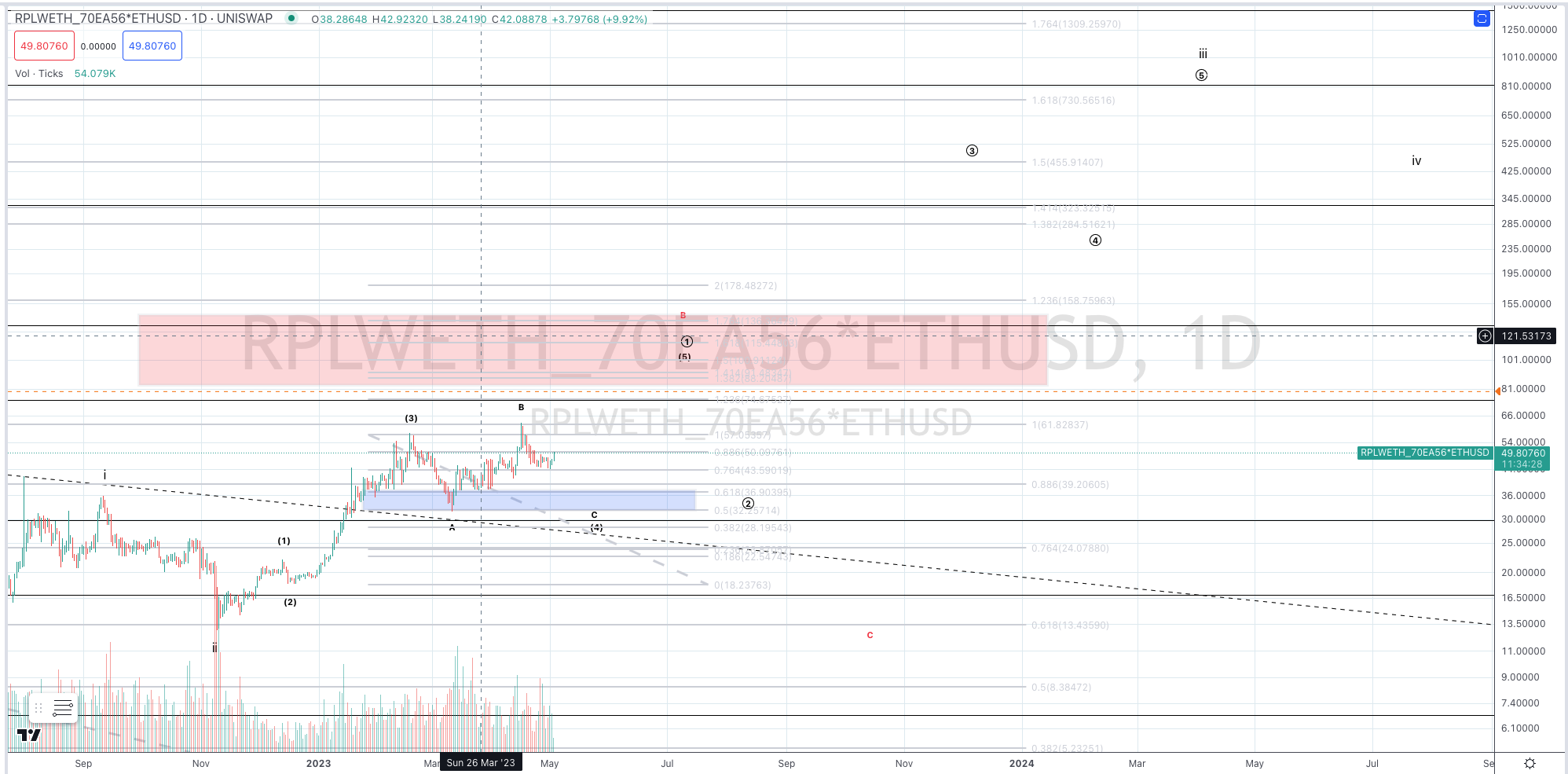Three Altcoins To Consider For 2023
The most recent articles that Jason and I released discussed the possibility that Bitcoin will behave bullishly for the remainder of 2023. But we do not foresee the price action in Bitcoin as clean. If Bitcoin makes it into six-figure prices over the next year or two, it will do so in a very choppy fashion. I see the price action in Bitcoin from 2018 until today as a large ending diagonal. That means the leg from $15,500 to my expected $125K should take on an ABC structure. That is much harder to trade than the five-wave structure of an impulse, which tends to have more upward velocity and shallower pullbacks than ABC structures.
As difficult as I expect the price action to be, since its November 2022 low, Bitcoin has printed higher lows on its daily chart with no sign of a let-up.
A Warning
Before we dive into a few choice altcoins, we have to acknowledge the risks. Firstly, I liken investing in altcoins to participating in venture capitalism, but without the legal rights imbued in the deals in which VCs participate. Altcoin investors make bets on projects they are passionate about. However, most of the time the tokens involved don’t offer rights to the cash flows of such projects if they are successful.
That said, I still believe the crypto sector has birthed many projects that have changed finance forever. As an example, the utility of decentralized DEXs has led to their volume eclipsing those of centralized exchanges in the last year. I am cheering on many such projects. But that doesn’t mean one must own a DEX’s token. Most often, the best way to participate in the fees from DEX traders is to participate in the liquidity pools of such DEXs. The tokens of leading DEXs such as UNI, SUSHI, and CAKE, by and large, have done terribly despite the success of the products they represent.
Jason and I have seen many counts in altcoins fail. They consistently tend not to fill in large-scale impulses, often failing in three waves before they commence a path to all-time lows. With that said, applying Elliott Wave analysis to altcoins is a means to evaluate when sentiment is likely to drive prices higher. We have been able to trail stops and get out when failure happens. Trailing stops coupled with regular profit-taking leads to great gain.
This is to say: If you are an investor, don’t touch altcoins. Stick with Bitcoin and Ether as they have proven their long-term trends. And, if you venture into altcoins, you need to know when to get out early, sometimes at a loss, when warranted.
After hearing my fair warning, let’s look at three that I am interested in now.
ImmutableX
ImmutableX is a company building web3 infrastructure for creating play-to-earn games and NFTs. It is a layer-2 scaling solution on the Ethereum blockchain.
The ImmutableX token, IMX (IMX-USD), is a highly speculative play. It was launched at the beginning of the 2021–22 bear market, in November 2021. Naturally, after its launch, it remained in an incessant downtrend through December 2022. That means there are lots of earnest sellers anxious to get their money back.
However, after printing its all-time low of 37 cents on December 30, 2022, IMX started a strong rally that brought it to $1.59 on March 18, 2023. That made many previous owners whole. But after that high, a new downtrend started.
From an Elliott Wave perspective, the 2023 rally in IMX appears to be a nice impulsive rally with five waves into the March high. That means the current correction since that high is likely a wave 2 before IMX starts to form a larger degree five-wave structure. This wave 2, shown on my chart below, should bottom between 77 and 54 cents. Right now it looks like it will come very close to the lower number. Below 54 cents, sustained, I will no longer have a bullish perspective and will expect new all-time lows. But assuming IMX can hold up, and depending on where it finds a final bottom, my target for the next degree can range from $4.85 to $10.
GMX
The GMX token is issued by GMX.io, a decentralized perpetual futures exchange that runs on the Arbitrum and Avalanche networks. It functions as a governance token and the exchange shares 30% of fees with the holders. That makes it one of the few tokens that provides a cash flow that is not produced by inflation, but rather a cash flow that comes into the ecosystem from users via trading fees.
GMX was born during the crypto bear market of 2022 but never participated in that year’s downtrend, as volume on the exchange continued to grow. The low on my chart was on June 15, 2022, when it traded at $9.70. At that time, Bitcoin traded at $22,500. When Bitcoin posted its 52-week low on November 9, 2022, near $15,500, GMX traded at $26.45. As Bitcoin began its recent uptrend from that low, GMX only strengthened. It trades at $69.17 at the time of writing.
I don’t find the long chart incredibly clean, partly because of its short history. That causes caution when it comes to suggesting longer-term swing trades. However, today we have a nice, immediately bullish, low-risk set-up in GMX. Support for the trade is $59.30. Breaking that is not necessarily bearish but it makes an already murky long-term chart even less clear. So I will use that level as a stop. If that level holds, GMX is aimed at $164. That level is presumably the top of the third in a large C wave. But after that level is hit, I will take substantial profit until the long-term intentions of the chart are more clear.
Rocketpool
This next coin is a long-term set-up. That’s not intended to conflict with my warning statements about altcoins. I am saying that this set-up may take time to materialize into gains. One must still be careful about how much to risk in this coin.
Rocketpool is a protocol that allows users to participate in Ethereum validation and its monetary rewards by staking as little as 0.01 Ethereum. Without the protocol, to be an Ethereum validator one must stake at least 32 Ethereum. The difference at today’s prices is $18 versus $58,400.
The protocol’s token, RPL, is used as a governance token and a currency with which to pay protocol fees. RPL rallied from $1.20 to $63 in 2021 in a structure that may be called a leading diagonal. After topping in 2021, it declined into the $7 region in June 2022. But it didn’t continue to decline with Bitcoin into November of that year. It reversed, went back to $35, and started a series of higher highs and lows. Finally, in the last two months, it made new all-time highs.
In the short term, I can see RPL continuing into the $90 to $120 region as long as $33 holds. However, this region requires care. If at any time it sustains below $33 it can drop back to the $7 region in my red c-wave. I am treating that as likely and keeping my position very light. I will scale into the $30s, should that pullback occur. That is because the circle-2 is valid down to $2.91. If it holds, RPL has a shot at reaching $600 above in its third wave. If it never prints that lower red C-wave, so be it; my small position will produce great profit on a percentile basis.
These are monstrous ranges to deal with, so you can’t take on the position size you are used to in low-beta stocks, or high-beta for that matter. You have to keep it light so you can afford to capture volatility.
I pride myself on making a lot in crypto by risking very little on each trade.
Conclusion
In conclusion, Bitcoin is likely to be bullish for the rest of 2023. But unfortunately, the action so far suggests a very choppy path to $125K. If at any time $18K breaks, this view becomes questionable. Because Bitcoin tends to bring many altcoins with it, a bullish Bitcoin cycle is a safer time to trade altcoins. But we can’t pick just any altcoin and assume it will act bullishly. We must judge the structure of any chart in which we are interested. In light of this perspective, I have chosen three altcoins for your consideration: IMX, GMX, and RPL.




